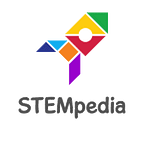Experiential learning is the most important part of a child’s life. Scratch that; it is the most important thing for people of all ages. If we’re not learning, we’re not growing. Psychologists say that most human behavior is learned behavior. You might think that’s a stretch. But we’re learning ever since we took birth. We learn how to walk, eat, cook, drink, and, well, behave. Not just that, even our reactions to problematic situations are learned. We’re conditioned into thinking the way we think, act, speak, and perceive things. We also learn how to prepare for the next moment by reflecting on our past behavior. We learn how to act by idolizing; by learning what our idols would do/have done in a similar situation. Come to think of it, even the most basic humanity comes out of what is called cognitive learning. We can sit back and think that how we act is something that belongs to us solely, but in retrospect, we have learned our actions, reactions, and emotions like compassion, empathy, devotion, and ambition, among other things.
What we learn is sometimes defined by how old we are. For example, a primary thing for a child to learn would be how to drink water, and later, he is going to learn how to eat, then chew, and then swallow. If this part of learning gets skipped, then the child is going to be underdeveloped even as he continues to grow chronologically. This initial part of learning is really important.
Read on to find out how efficient learning as well as staying up-to-date with 21st-century learning is really important for a child, in all areas, and how STEM learning can help with that.
Psst. A little something before you leave!
If you would like to read more about education in the modern world, go check out these blogs as well!
